A Modern Illustrated Political Fable By an Anonymous Folklorist
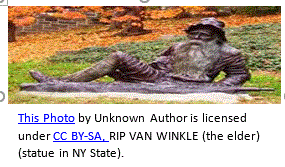
Rip Van Winkle VIII, Esq, the great US government intellectual property and trade lawyer and descendant of the Hudson Valley Van Winkles, fell asleep on December 12, 2001, the day after China joined the WTO. He woke up earlier this year to find a changed country, engaged in a trade war that undercut all his prior hard work. He was disappointed at how the US had handled the legacy of China engagement that marked the period before WTO accession. He had a Yogi Berra-like moment of “Deja-vu all over again “, and felt he had to reach out to the American people to tell his story. These are my interviews with him.
I asked Rip about the 301 report on Chinese forced technology transfer. “You mean, the report that launched the trade war”, he remarked with a wry smile. He said that he was surprised by the tactics that the President pursued. The US “pressured China without imposing tariff sanctions in the 1990s and with considerable success. For example, China agreed to have a trade secret law back in 1995 or so. No administration in the 1990s had to pull the tariff trigger on China, although we had a clearer legal basis in international law to do so since China was not yet a WTO member. We also had the statutory authority to revoke MFN on human rights issues but didn’t do that either. Now our imposing these sanctions risk dismantling the global trading system. I understand the frustration about China’s WTO compliance, but I don’t understand why we haven’t more aggressively pursued WTO remedies.”

I asked Rip, “Was it because the issue back in your day was one of China’s compliance with the laws, rather than enforcing than the laws as written? After all, it is hard to bring a case on how adequately a country is enforcing its laws. There are lots of flexibilities built into the TRIPS Agreement.”
Rip pensively pulled on his long Van Winkle beard and noted ”Back then the efforts were not simply legislative. China’s enforcement of IP was weak too, and some progress was made: for example, there was a special Customs regime on exports, which is TRIPS+, which survives to this day. Specialized IP tribunals were also something that he had worked on ‘back in the day.’ There were also a number of special campaigns, task forces, and other efforts. In fact, people had even been complaining that some of the enforcement had gotten too tough when China launched a ‘strike-hard’ campaign against some of this activity.”
“But, “ I added “today we have high tech issues in addition to counterfeiting and piracy issues. We have AI, and IoT, and 5G, and genetic engineering, online businesses, plus all the counterfeiting and fake goods. These are new issues!”
“All true,” said Rip, “and you have other new things that are also fake,” Rip smiled, “fake news and–,” he added sarcastically, “this President.” Rip appeared puzzled that a reality TV show actor could also become President.
“But I am not surprised by all the fake goods originating from China that are sold throughout the world,” he continued. “After all, that was the problem with regional trade in the 1990s. It was to be anticipated – that was the reason we asked China to control infringing exports in the ’90s. “
“As for technology, we had those challenges as well. There was the ‘great subsidy’ compilation CD exported from China that infringed on multiple business software copyright owners,” Rip mused. “That was a high-tech problem. We found solutions working in Taiwan and China. And what about the submarine they discovered in Hong Kong to haul counterfeit DVD’s? That was also a high-tech problem.”
Rip pulled out a beaten photo of a diagram of the submarine that was captured by Customs authorities in Macau:

Photo by Mark Cohen from an original diagram at Macau Customs.
“I don’t get it though” Rip snorted. “Why did the US file a WTO case in 2007 against China’s export of counterfeit goods, DS362? We all knew that this was not a WTO issue, but one that depended on external pressure on China. China was only obligated to have Customs remedies on imports. Yet we haven’t yet filed a case against how ineffective China’s IP remedies are, which is a specific WTO requirement? I expected more, from China’s carefully crafted WTO accession package and from the US and the WTO itself. We worked so hard on that package.”
“As best we could, we foresaw many of these problems in the 1990s and created the roadmap for legal strategies. Sure, it wasn’t perfect. It was a crystal ball exercise. But look at China’s WTO commitments. China’s obligations had no grace period. There was a special safeguard measure. China was subject to a range of extra commitments as a non-market economy under our dumping law. China was also subject to extensive new transparency obligations. Moreover, China’s trade regime was subject to a 15-year annual review. Its IP regime should now be the subject of WTO cases.”
Rip shook his head: “Only a few weeks after WTO accession in 2001, China implemented a discriminatory technology licensing regime called the Technology Import/Export Regulations, which discriminated against foreigners. Why did we wait until March 23, 2018, for the US to file a case against this regulation? Who else was asleep when I went to sleep? Did someone put sleeping pills in the water?”
It is true, as the press reported, that when Donald Trump met Rip Van Winkle, they both agreed that nothing had changed on China IP. However, the media once again generated some fake news around that meeting. Rip disagreed that Trump’s strategy made sense, or that the US should indeed feel like it had exhausted its patience. After the meeting, Trump tweeted that “Rip Van Winkle is a BAD man”.

That was indeed their only meeting. Trump referred Rip’s personnel dossier to OPM for further investigation to see if he had been collecting salary during the past 18 years when he should have been on leave without pay or whether he was simply AWOL.
After the incident with Trump, Rip went to Beijing. He noticed that things had changed. The street vendors of DVDs, counterfeit Beanie Babies, and all other manner of fake goods were largely gone. When he talked to average Beijingers, they seemed to know a great deal about patents, trademarks, and copyrights – perhaps more than the average American. He was shocked to see that the patent and trademark offices had grown to the largest in the world. He was pleased to see that China had a system of multiple intellectual property courts, with specialized judges. He met many American-trained lawyers working in Chinese law firms, in companies, and in government. This looked very much like the kind of system that the US might have imagined for China back when he was negotiating.
However, there were other ominous changes for the US. The Chinese patent office was now several times the size of the US patent office, as was the Chinese trademark office. Moreover, domestic filers dominated in both those offices, as they did in bringing suits to the courts. In areas such as information technologies, where the US was once the dominant manufacturer and developer, the leading role had been ceded to China. China now produced 25 to 30% of the world’s high tech products, supplanting both the US and the EU. During a southern excursion on this trip, he saw that Shenzhen had grown to a high-tech mecca, well beyond even his dreams.
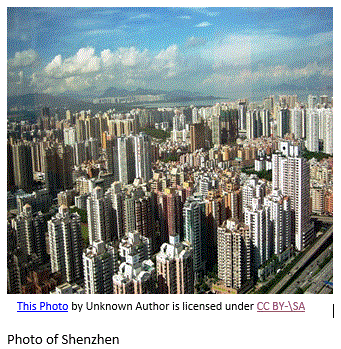
Rip was amazed to see that the Chinese IP system by some measures at out-paced the US. The Chinese courts now handled about 280,000 IP cases in 2018, up 40% from 2017, while US domestic patent cases were declining. Chinese courts handled over 100 times more copyright cases than US courts. It was also an IP system that didn’t merely serve big state-owned companies. The percentage of individual filers of patents as well as patent litigants in the Chinese courts were higher than in the US. Moreover, in areas like software, business method patents and genetic patents, where the US had a lead “back in the day,” the Supreme Court of the US had made it harder to obtain patent rights. China, however, was making it easier. And this eBay case decided by the US Supreme Court in 2006 – why did the US decide to make it harder to get an injunction for an IP dispute, thereby weakening the system even further?”
Rip wondered, was there some kind of reverse alchemy at work – were we turning our IP system of “gold” into one of “lead”, and China was now getting the magic touch?
“It isn’t quite that simple” tweeted Mr. Trump when he heard of Rip’s reporting on the matter. “We are pursuing structural barriers!!!”
“Well, we had the Structural Impediments Initiative with Japan back when I was in the government– sounds pretty similar to me.” Rip reported, closing an op-ed he wrote by asking the President: “Have you been asleep too?”
Rip thought that it was not surprising that China would benefit from being a low-cost manufacturer and joining the WTO. The expectation was that China would also continue to make necessary economic reforms, and the US would monitor these reforms. After the Tiananmen incident, the Western world was also greatly concerned about China’s commitment to liberal political and economic values. The current regime in China may be pushing back on the legacy of Deng Xiaoping, but that should have made a WTO case that much easier today, by showing that China had reneged on some of its fundamental WTO commitments to bring about economic reform and institute certain minimum rule of law and transparency obligations. These kinds of cases would also elicit support from many in China and from our trading partners.”
“Why didn’t you learn your lessons? Is that the reason you brought back Lighthizer to USTR? I hadn’t seen Bob for decades. Did he fall asleep for even longer than me, maybe thirty years?” Rip joked, half-heartedly.
”The Japanese tried to persuade us that the reason there was a trade deficit with Japan was because of our lack of knowledge of their system. Japanese snow, they said, was different from US snow so we couldn’t sell our skis there. We all know however that this was a sorry excuse for market barriers set up to protect their industries.“
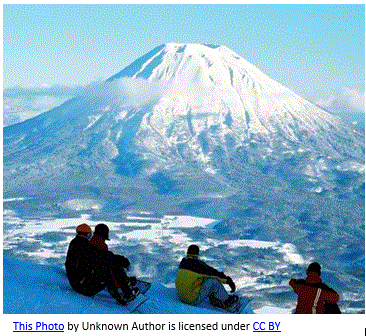
Japanese snow by Mount Fuji. Does it look different?
“With China, we knew there were a host of other, more problematic non-market barriers including possible security issues with Taiwan. When we worked on the TRIPS Agreement,” Rip recalled, “We made it pretty clear that this was an agreement for market economies. There was a transition period in the TRIPS Agreement for-state controlled economies, and we had extensive provisions around civil remedies, which reflects the private law orientation of TRIPS. When we went ahead in our own domestic laws to define what constitutes a non-market economy we didn’t even tackle the role of intellectual property, perhaps because we hadn’t thought through the problem of how a non-market economy could exploit IP in its own interests. The problem we face today is due to an unanticipated turn by China, that it would ease up on economic reforms and not reject IP but instead incorporate IP its state planning mechanisms.”
“Look at the preamble to the TRIPS Agreement,” Rip fumed. “It says intellectual property is a ‘private right.’ As I recall, the Hong Kong delegation put that into the TRIPS Agreement – they anticipated what was going to happen just a few years later in the 90s when they would be reunited with the mainland.”
“We know that IP is a private right and we knew that the Chinese state is interfering in markets. We knew China had technology goals, and that the state was not letting individuals maximize their interests in private property rights. We knew that addressing these issues was core to the success of China’s WTO accession. We put in a host of other provisions in the TRIPS Agreement – national treatment, most favored nation treatment, due process in IP cases and IP antitrust cases, right to an independent counsel and an independent lawyer, injunctions and preliminary injunctions, the right to a decision based on evidence — yet, the only WTO case the United States brought against China on IP until 2018 occurred back in 2007 and it involved asking for greater control by China of those markets – for improvements in China’s criminal and Customs IP remedies, as well as its censorship regime.”
“It doesn’t stop there either. Our antitrust authorities entered into training and other programs that have further enhanced the role of the state by working with China’s former State Planning Commission and others so that they can further diminish the value of these rights – rights that our companies have a hard time trying to enforce – and that further strengthen the role of the state. You can’t have IP abuse unless you have IP use….”
“So having lost this 2007 case,” Rip asked “the US government decided it wasn’t worth filing another WTO case for 10 years or so? What were we asking for – the Chinese government to step in and do more to control property rights?” Rip snorted. “I don’t like Mr. Trump, but then again I can’t blame him for lousy strategies of 10 years ago.”
“Maybe the US went astray because you bought into the rhetoric of the 1990s which saw intellectual property as a foreign concept to China, one that was inconsistent with Chinese Confucian culture and that was not susceptible to change due to US pressure alone. These misunderstandings were promoted by academics and Chinese officials, often over the objections of Chinese scholars. By almost any measure, their assumptions were flawed, and they could not have predicted China’s wholesale and disruptive embrace of intellectual property into its innovation ecosystem. “
“Of all those assumptions, the one that China would not protect IP until it has IP of its own to protect, is the ‘old wives tale’ that…”
I corrected him: “’Old spouse’s tale’–we don’t use this sexist terminology now, and even that is ageist.”
“This old assumption” Rip said looking hopelessly at the sky, “that China needs more IP of its own in order to protect US IP should have been discredited only a few years after I went to sleep – because it was around 2005 that the Chinese trademark office grew to be larger than the US trademark office, and that Chinese TM owners were the dominant applicants. And that trend has spread to nearly every other sector or indicator – patents, plant varieties, copyright registrations, litigation…. “
“As for this indigenous innovation problem, or Made in China 2025, or Strategic and Emerging Industries, or Medium and Long Range Scientific Plan, or 1000 Talent Program, or High and New Technology Industries, or indigenous innovation, or techno-nationalism, or self-strengthening, or China ‘breaking the IP paradigm’, or China’s Galapagos-style isolated and unharmonized technical standards – whatever you want to call it — it is also shocking that you didn’t read the signals from the 1970s and 1980s. “
“It was the science and technology people that were negotiating IP issues with us back then – even through the 90’s – including most notably Vice Premier Wu Yi, a petroleum engineer. Ma Xiuhong, who I understand later became Vice Minister, was an engineer with the People’s Liberation Army. My IP negotiating counterpart was Duan Ruichun, from the State Science and Technology Commission. We sent our lawyers, and they sent their engineers and Ph.D.’s! Did any of you fellows every study Chinese history and look at how China safeguarded its own technology, like sericulture, from the Romans? Have you read Joseph Needham’s Science and Civilization in China….They knew early on the value of technology!”
“Forced Technology Transfer?!”, Rip added, “How about this language from the Office of Technology Assessment Report (OTA) report on Technology Transfer to China in 1988 that I worked on: ‘Although most U.S. firms approach the China market with the intent to sell products, many find they must include technology transfer if they wish to gain access to the China market.’”
“We were also aware when we wrote that report that China was modernizing with military goals in mind,” Rip noted: “‘Our report went on: ‘If China is to become a major power, it will be through developing its own capabilities throughout the economy. Thus, in the long term, technology transfer will have a great military effect if it spurs innovation, modernized thinking, research and development, and economic growth generally.’”
“This isn’t a state secret!” Rip showed me a picture he was given from the Ministry of Science and Technology website that says “indigenous innovation” next to a Chinese missile.

“To save the situation of the United States, you might want to look at ourselves. OTA was closed after that report, as was the Technology Administration of Commerce, and the Office of Science and Technology Policy in the White House was also defunded from engaging in China.”
Rip pulled out his perfectly preserved copy of the OTA report from 1988:

“By the way,” Rip asked “Are there any foreign commercial service officers posted overseas that have technology promotion as an export goal? Has the US census changed its antiquated reporting system where it reports technology transfer as exports of ‘industrial processes’– whatever that means…” Rip was getting agitated. “I would have thought that the US would at least take steps inside our own government to improve our knowledge and engagement on these issues.”
Rip scratched his beard, told me that he felt like Diogenes looking for a good man by the light of his lantern in ancient Greece. Rather than looking for an honest man, he had no idea where to find anybody who understood technology trade in a US government agency in DC.
 Painting of Diogenes looking for an honest man
Painting of Diogenes looking for an honest man
“There are WTO cases that could have been filed. In addition to investigating whether China has an ‘adequate or effective’ IP regime under the TRIPS Agreement, and all the other general requirements of the TRIPS Agreement I talked about, there might also be cases about the role of the state as infringer and misappropriator of trade secrets and the state’s role as a cyber-spy, China’s watering down of IP rights through antitrust and denying due process to US lawyers, and there’s always the possibility of a ‘non-violation’ or ‘situation’ complaint. I understand there is a moratorium in the TRIPS Council on these generalized ‘non-violation’ complaints, but it still might be worth pursuing them. We could also look at other remedies, such as using the countervailing duty law that China is using subsidies to undercut what we reasonably expected by China’s accession to the Information Technology Agreement.” He was on a roll and continued: “Hell, even our lawyers can’t function well in China because the market is so restricted and they are paying higher taxes on their China revenue than Chinese lawyers, even though they are often providing the same kind of advice on Chinese law or foreign law. That seems to be a national treatment violation of the GATS to me….”
“Many of these cases would be fact-intensive and difficult,” I said. “They might also invite retaliation…”
“Difficult? You think you have it bad?” Rip asked indignantly. “China has finally gotten around to publishing its cases, and its patent and trademark databases are pretty transparent. Back in the day, you had to hire a Chinese lawyer to look at the few databases or books that were only available to them. The trademark classification system was a secret. Moreover, most judges didn’t have legal training so judgments might not be well-worded. In fact, back then lawyers would sit around a table exchanging information about the little pieces of information they had about the “nei-bu” (internal) laws that were governing their clients’ investments. We had to bring a 301 case just to get China to publish its laws and regulations. Now you not only have more information, but you also have Chinese lawyers trained in the US system and US lawyers that have graduated from Chinese law schools. This is a lot better than the random shots we were taking without much information to improve China’s legal environment.”
“Moreover, now the government actually publishes draft laws and regulations for comment, as well as the laws and lots of the enforcement data. In fact, the Chinese government has been promoting open government platforms, including publishing of cases. Today you have more data and much more transparency. Has anybody looked at the licensing data? Has anybody looked at how the patent office and courts treat foreigners and whether full national treatment is available? If you want to avoid retaliation against companies, just use the data….” Rip fumed, “we would have died for this kind of information back in the 1990s. Youse guys don’t know from difficult. ” Rip’s New York accent was manifesting itself.
“I also don’t understand why US companies don’t bring many cases to the Chinese courts! I understand about 1% of the IP litigation in China today involves foreigners. That is really pathetic. Companies have kept on running to the US government on the same issues but often didn’t pursue the legal remedies that we negotiated. Not only do Chinese companies file far more cases, but they also bring cases against their own government if the facts support it. One group of Chinese citizens actually sued the Supreme People’s Court on a land-use matter some years ago. I think those people had more to fear from retaliation than some American companies. Some of us seem to be scared of our own shadow.”
“We have to acknowledge some of the recent positive changes too. I like it that China has a new foreign investment law that says the government can’t compel tech transfer as a condition of investment approval, and they finally discarded their tech transfer regime. I wish you good luck on supervising those, however, particularly if you don’t do the data-driven analytics. I also like the new appellate IP court. It is like our own CAFC, and they are increasing damages in the courts, and have increased transparency and are experimenting with case law. I don’t think the US should be pursuing punitive damages in China however, as much as compensatory actual damages. We have to let the civil system fulfill its role as the primary arbiter of disputes around private property rights. You guys in the government should be all over this. In fact, you should be sharing your views with industry, including your comments on draft laws, rather than treating your comments and engagements as some kind of secret negotiations. These are important reforms that could have wider consequences. And you don’t have to be in a trade war to talk about them with China or with our own industry.”
“But there have also been negative developments, and it seems like you have been ignoring both the good and the bad. Today, it is harder to get a pharmaceutical patent in China than back in 1995, when we finally got China to grant patents for new pharmaceutical compounds.”
“Moreover, back around 20 years ago, I saw that the likelihood that a US company would get a patent granted for a semiconductor patent in some classes was nearly 100%. By 2014, the grant rate drops dramatically to between forty and sixty percent.” Rip looked around sheepishly on that one: “Are you certain I wasn’t the only one asleep?
“The reasons for these changes are pretty obvious. China needed foreign investment or international recognition back then. Motorola’s semiconductor plant was the big foreign investment project in the 1990s when I was getting ready to fall asleep. We left you with a pretty good, improving track record then on pharma and semiconductor issues. Now China believes it doesn’t need to offer the same protection. We wrote the TRIPS agreement to promote private property rights and transparency. We brought China into the WTO with multiple additional commitments, possibilities for review of China’s IP regime, and to ensure there was no discrimination against industrial sectors in patent grants, litigation, and other areas. How are those projects going?”
I told Rip that I was unaware of any such projects.
“If you started looking at the data, you might have a different view of what is really going on and how to use the WTO. For instance, I know many in the US were upset when China didn’t need to change its criminal IP laws in 2007 as a result of a split decision on a WTO case. But in the next several years the number of criminal IP cases in China went up dramatically. It seems the US ultimately identified a real problem to China. You could also say the same thing about US efforts to get China to publish its IP cases in 2007. Today China has public databases with most cases available online. You don’t need to win the dispute in a written decision in order to make a difference. ”
”I know the data is incomplete.” He added. “ I noticed, for example, that not all the cases were being published. There is lots missing. But the missing data is also instructive. Back then, we had real China watchers.”
For a moment, Rip looked like the Wizard from the Wizard of Oz giving a heart to the Tin Man, knowing that he already had one: “These China watchers looked for what was missing in China in the reports, not what China told us about its system. They learned their lessons from the old Soviet Union, that is, they learned to look at what is missing in a photograph of Red Square or an economic report.”
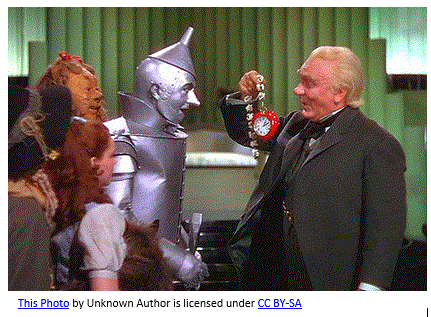
“As for this Confucius Institute problem, I see that the Modern Language Association reports that Chinese language studies are dropping in this country (13% between 2013 and 2016). Are we supposed to rely on China to teach us about China? I guess that doesn’t matter since even that pathetic effort is under attack.”

“By the way, I heard that these problems of Chinese misappropriation of US technology might even affect private and public US science and technology collaboration, where China was entitled to own all improvements to technology licensed to China. I would hope that the US government and industry would share any information that they have on this so that we can learn from it, and we could have a data-driven discussion around it…!”
Rip was feeling exhausted. “When I first woke up, I thought this had to be a Sputnik moment. The US would need to get back on its feet, revitalize its competitiveness and invest in science and science diplomacy. I was wrong. This is more of a Pogo moment than a Sputnik one. We are forgetting technology, misunderstanding China, eroding our IP system, and not utilizing the tools we put into place.”

“You see, the problem isn’t that China has become the new Japan, nor is the problem that China doesn’t protect IP,” Rip concluded. “The problem is that the US forgot the significance of two elements of IP in China: (a) the Chinese economy is state-controlled and includes economic plans involving IP, and (b) IP is a private right.”
He sighed, “I recognize that there are other trade issues, but having a foreign state adopt socialist-style economic plans on innovation is a recipe for government intervention into the markets to the disadvantage of foreigners, and for frustrated trade negotiations on IP or innovation. These should have been addressed consistently and head-on.”
As we closed the interview, Rip looked increasingly exhausted. He took me on a slow stroll past Lafayette Square in Washington, DC and gave me one final suggestion. “Why don’t you try and bring back some of the old team, like the folks who worked on the OTA project – some of those folks are still around – gee, even that greenhorn Craig Allen is now the President of the US-China Business Council, isn’t he? He was just an intern when we worked together at OTA. My old friends who worked on that OTA report, the China lawyer Stan Lubman and the China innovation expert Pete Suttmeier, are still around. They didn’t have the benefit of a twenty-year beauty nap like me, but then again, I would hope they hadn’t fallen asleep at the wheel like the rest of you.”
And with that, Rip looked wistfully at the White House, thinking of his little family hamlet in the Hudson Valley, and the historic sacrifices of his family for his country since the founding of the Republic. He tucked himself into some worn bedding and closed his eyes to the traffic and tourists. If you travel to Washington, DC you may still hear him snoring gently near the White House gates.
Don’t think of him as just another homeless person. He is really waiting for the right moment for the country to wake up again.
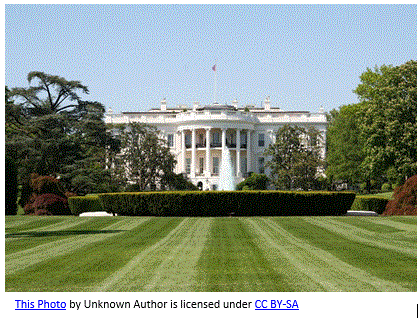


Brilliant! And, kudos and thanks again Mark for your blog insights!
LikeLike
Here is a recent report urging recreation of an OTA-like office in the Congress:
https://ash.harvard.edu/files/ash/files/
293408_hvd_ash_sciecne_tech_and_democracy_report.pdf
LikeLike